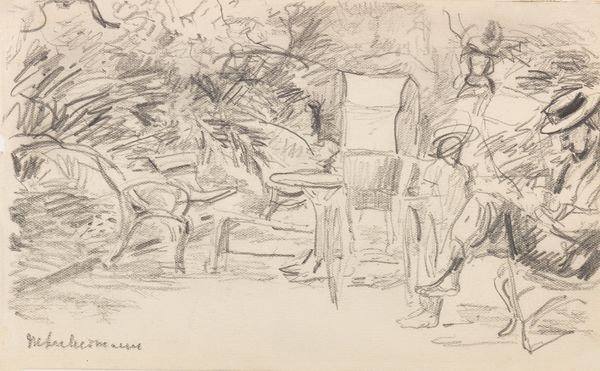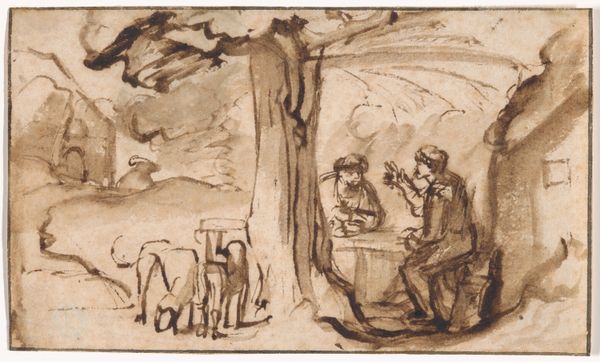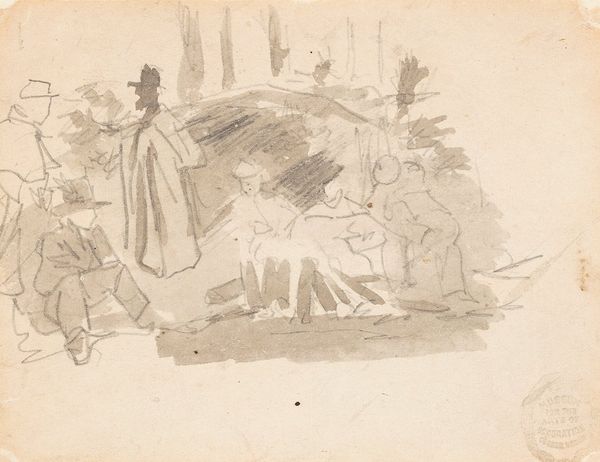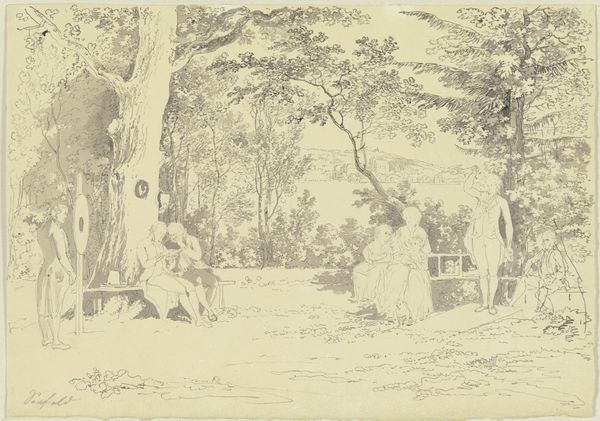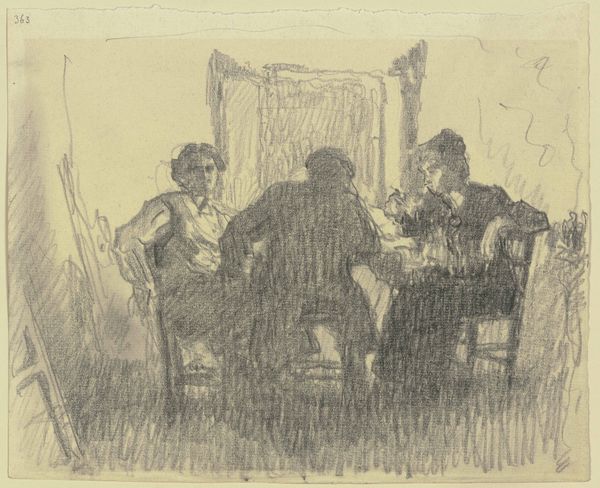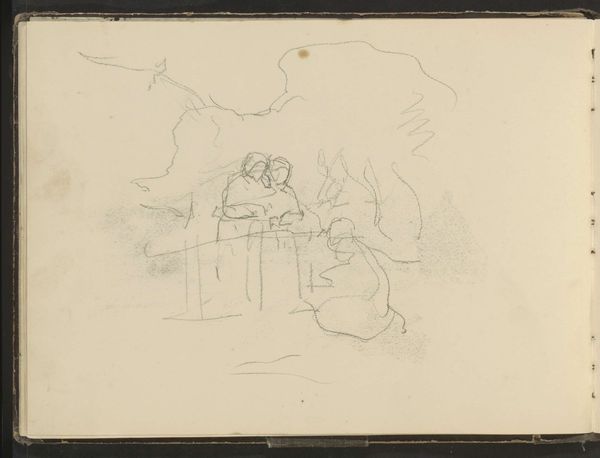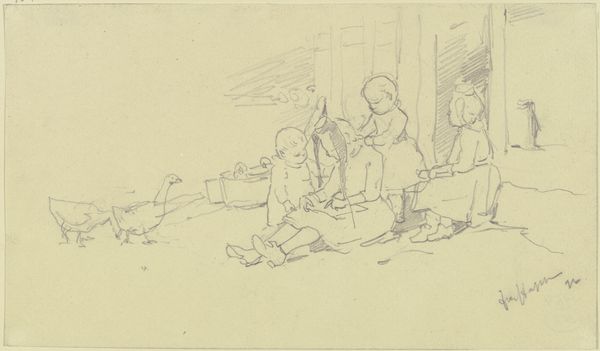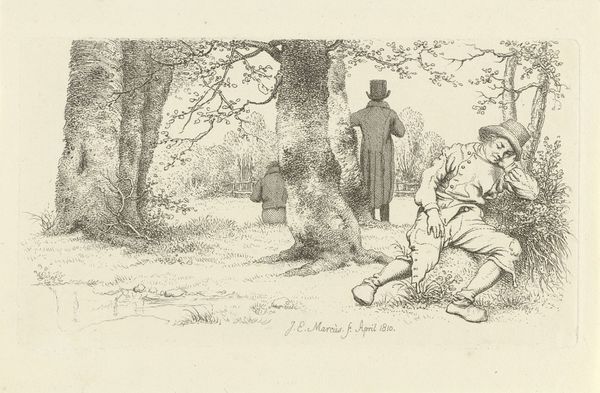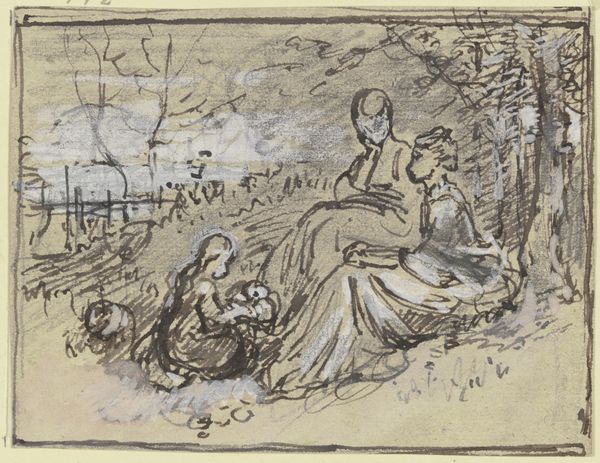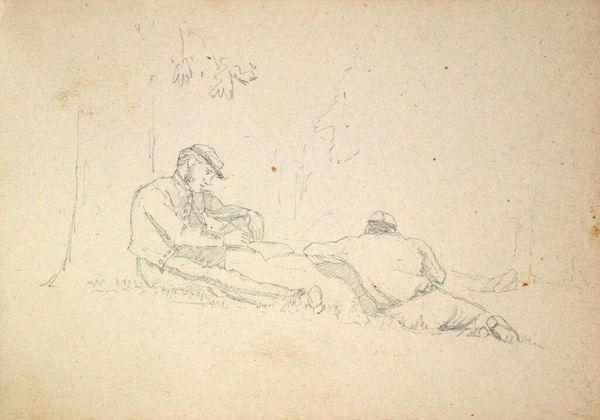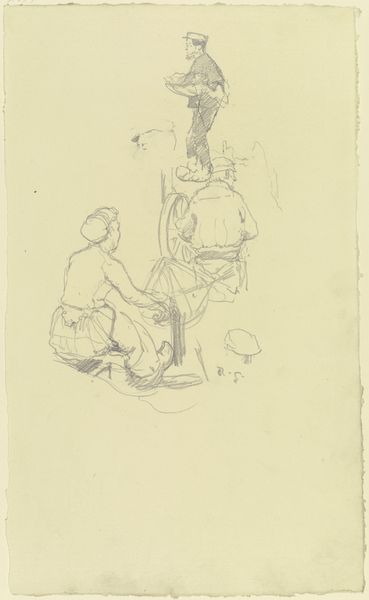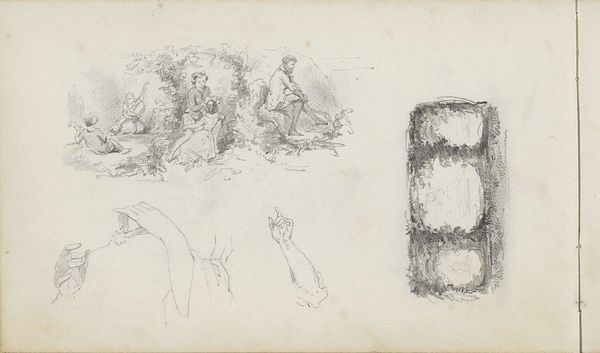
Copyright: Public Domain: Artvee
Editor: Here we have "Madame Henri Kapferer et ses enfants" by Édouard Vuillard, created in 1926. It's a colored pencil drawing, and what strikes me immediately is its casual domesticity. What do you see in it? Curator: Well, immediately, I'm drawn to the material reality of the artwork. The visible pencil strokes, the layering of colors... It emphasizes the *making* of the image, reminding us of Vuillard's labor. Consider the colored pencil: a humble tool, blurring the lines between fine art and domestic craft. How might the choice of colored pencil, as opposed to, say, oil paints, influence our perception of this bourgeois scene? Editor: That's fascinating! I hadn’t considered the impact of the material itself. Does that inform the intimist quality? Curator: Absolutely. The texture, the marks; they point to production processes and, moreover, to the social class who would produce this art and have the leisure time depicted. Where did Vuillard buy these pencils? Were they mass-produced? Did their affordability open art-making to new segments of society? What were the material conditions of art creation at the time? Editor: So, by focusing on the colored pencil, we move beyond the surface-level domesticity and start examining the wider socio-economic context of its production and consumption. I'm beginning to appreciate the depth that a material-focused perspective offers! Curator: Exactly. And it challenges us to consider art beyond mere aesthetics, and towards understanding production. This intimate family scene isn't just a window into a private life; it's also a product of particular social and economic forces. Editor: Thank you! I hadn't thought about the materials telling such a layered story. Curator: And this story applies to all material culture. Now you are beginning to see how much stories can be unlocked when we center material analyses.
Comments
No comments
Be the first to comment and join the conversation on the ultimate creative platform.
